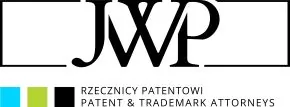It's impossible to imagine social media and websites without numerous photos, images and graphics plastered all over them. Indeed, using and sharing photos today is easier than ever. However, as the European Court of Justice (ECJ) recently confirmed in the Renckhoff case, this activity must respect the copyright of creators.
In its judgement of 7 August this year (C-161/17) the ECJ was asked to rule whether Internet users should be regarded as one large audience, or a series of intermingling and constantly changing groups, and whether the creator of a visual work can choose which of these groups he wants to share his work with.
The decision of the ECJ was handed down in a case brought by German photographer Dirk Renckhoff against the region of North Rhine-Westphalia. A pupil of a public school used a photo taken by Mr Renckhoff without his permission. It was made available free of charge by the photographer to a travel portal, then copied by the pupil and used as part of a school project, and finally placed on the school's website. It is worth noting that the photo on the travel portal was in no way protected against copying or contained a statement prohibiting its re-use, and the student provided information on the source of the photo in her project.
In answering the national court's question, the ECJ had to assess whether the inclusion of the photograph on the school's website was a 'communication to the public', to be decided by the author pursuant to Article 3(1) of Directive 2001/29. Central to this issue is the question of whether different websites have different audiences despite universal access to the Internet?
In his opinion in the case of 25 April this year, the Advocate General rejected the notion of segmentation of Internet users, in particular with regard to pages and elements placed on them that are not subject to additional security measures against access or copying. The Advocate General thus sought to impose on the author of a work an obligation to provide publication conditions that do not create the impression of full freedom of access to the work. In short, in the Advocate General's opinion, the photograph on the travel service that was the subject of the dispute should have been clearly marked with a statement prohibiting further distribution or protected in a way that prevents copying.
However, this reasoning was not recognised by the Court. The ECJ assessed the case through the prism of the objective pursued by the provisions of the Directive, i.e. the need to ensure the strongest possible protection of copyright. At the same time, the Court stated that making the work available on a website other than the one on which it was originally posted (i.e. which was made available with the author's consent) would lead to the author losing control over the work, and would thus infringe his rights. At the same time, the Court noted that the circumstances of the Renckhoff case were different from those of the previously assessed Svensson case (C-466/12). There is, therefore, a significant difference between a hyperlink to a portal where the work was originally published and the inclusion of a duplicate work, even if it contains information about the source.
The Court of Justice thus reaffirmed that the protection of copyright, which includes the right of communication to the public as well as the right to decide on the cessation of communication, must be ensured even if the author or any other relevant party does not take specific technical measures to prevent possible infringements.
http://curia.europa.eu/juris/liste.jsf?num=C-161/17
The content of this article is intended to provide a general guide to the subject matter. Specialist advice should be sought about your specific circumstances.

